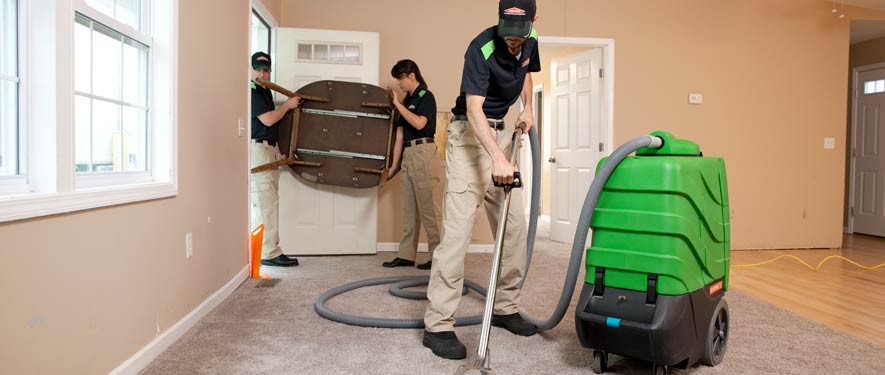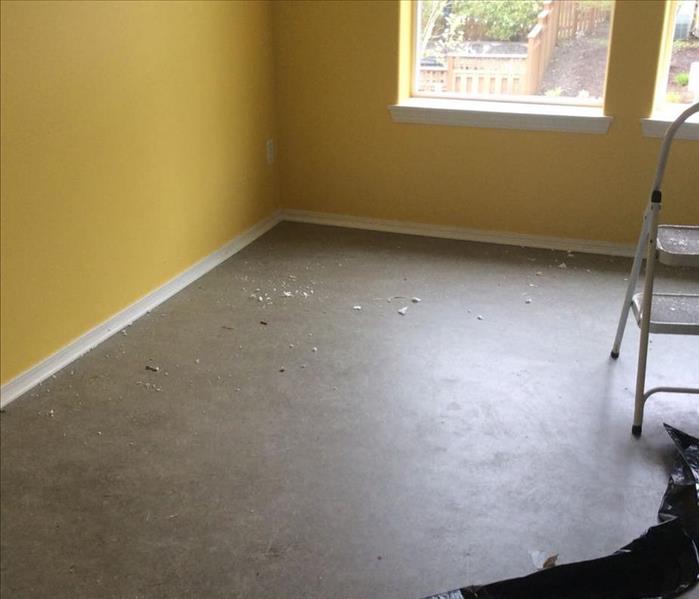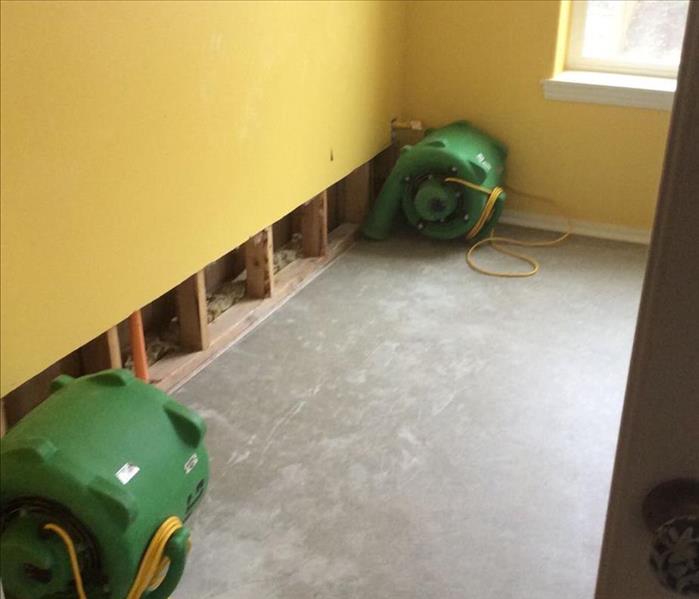
Step 3: Water Removal / Water Extraction
After the inspection and damage assessment step, the water extraction process begins. This step removes the majority of the water. We use powerful pumps and truck-mounted vacuum units to quickly remove hundreds or thousands of gallons of water from your property. It is important to extract as much water as possible as quickly as possible. Removing as much water via extraction will allow the dry out process to be completed faster and with less drying equipment and dehumidifiers. We have a couple of different techniques to use depending on the material that is affected; if carpet and pad are affected we can use a Flood King to extract water including an attachment that works square by square using the weight and pressure of our technician to push down and extract the water. If hardwoods are wet, we can use rescue mats to extract water and dry in place. They work like a cover on the hardwood floors that pulls the water up drop by drop across the surface of the boards so they are not damaged. SERVPRO of Gresham & SERVPRO of Oregon City/Sandy has been helping customers like you for nearly 30 years.
Move-Out / Pack-Out
If your home requires extensive restoration or cleaning, SERVPRO of Gresham can conduct an organized, efficient move-out to protect your belongings from further damage.
- Move-Out Service
Emergency Water Removal
Our highly trained technicians will begin the water removal process almost immediately. Depending on the amount of water, we may use powerful submersible pumps in addition to industrial strength, wet/dry vacuums. Removing most of the water helps reduce drying time and helps prevent secondary water damage and mold and bacterial growth.
- Remove Excess Water
- Use Submersible Pumps and Industrial Wet/Dry Vacuums
Inspect the Carpet Pad and Carpet
We inspect the carpet and pad and determine if they should be removed to protect the subfloor.
- Inspect Carpet Pad and Remove If Needed
- Inspect Carpet and Remove If Needed
Water Removal Equipment
- Moisture detectors, hygrometers, and other meters measure the extent of moisture saturation.
- Infrared cameras may be used to find “hidden” water behind walls and ceilings.
- Submersible and gas-powered pumps are used for continuous pumping of high-level water.
- Truck-mounted and portable extraction units perform efficient water removal.

 24/7 Emergency Service
24/7 Emergency Service




